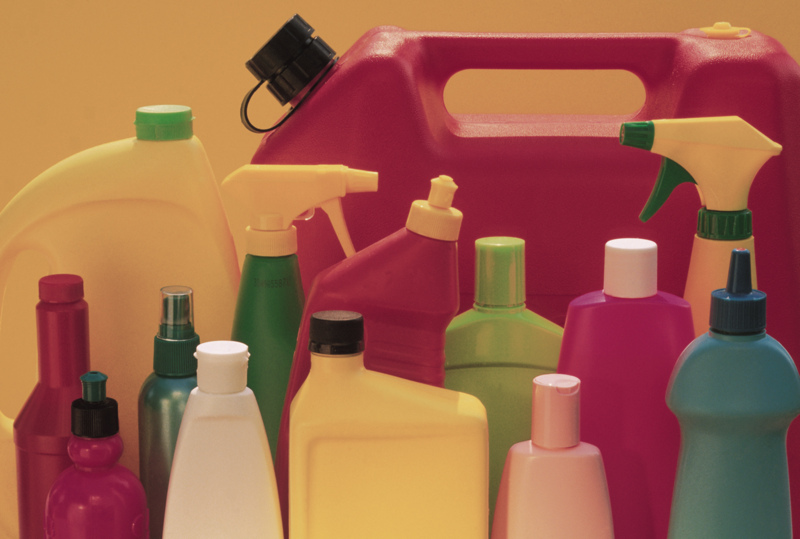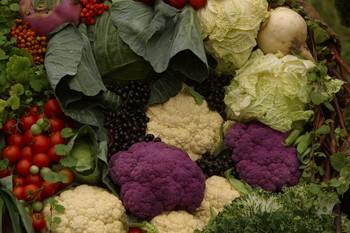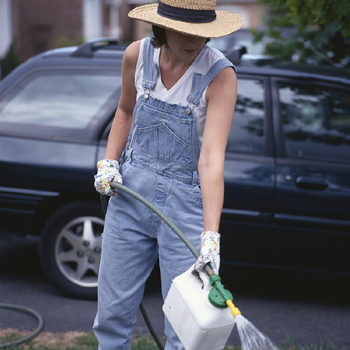Stay Informed
Popular Articles
- Hiatal Hernia: Hidden Cause of Chronic Illness
- Small Intestinal Bacterial Overgrowth (SIBO)
- Applied Lymphology: Unlocking the Secret to Pain Relief
- An Introduction to Constitutional Iridology
- The Low Down on Liver Detoxification
- An Energetic and Emotional Approach to Cancer
- Fat Facts
- Marrow in the Bones
- Blood Type and Nutrition
- Cardiac Herbs: Beyond Hawthorn
Quick Search
The School of Modern Herbal Medicine




Estrogen Pollution
- 7/31/2010
- Categorized in: General Health
Estrogens are great hormones. After all, they're the hormones that make women feminine and, as a male, I happen to be quite attracted to femininity. But, there are some estrogenic compounds in the environment that aren’t so great. They are called xenoestrogens and they are causing serious health problems in both women and men.
Before I discuss the health risk of xenoestrogens, it’s probably a good idea to provide a little background information about estrogens in general. I use estrogen in the plural tense because there really is no single compound called “estrogen.” The human body makes three different estrogen hormones—estrase, estrone and estriol.
Plants also produce estrogen-like compounds called phytoestrogens. These compounds are not chemically identical to the estrogens produced by the body, but they still attach to estrogen receptor sites and influence reproductive health.
And finally there are xenoestrogens, the topic of this article. Xenoestrogens are foreign estrogen-like substances which pass into our environment through pesticides, herbicides, fungicides, plastics, fuels, car exhaust, dry cleaning chemicals, industrial waste, meat from animals fattened with estrogenic drugs, and countless other household and personal products people use every day. Xenoestrogens are a primary cause of reproductive health problems in both women and men because they attach to and over-stimulate estrogen receptor sites, thereby causing excessive estrogen activity. This causes changes in estrogen-sensitive tissues like the breasts, uterus and prostate. Xenoestrogens stimulate abnormal changes in these tissues, causing problems like cysts in the breasts, fibroids in the uterus, and enlargement of prostate tissue or even prostate cancer.
Pesticides and Miscarriage
My introduction to the problem of xenoestrogens came when my third wife almost miscarried our baby after being exposed to pesticides. We were living in a rented home and the landlord sprayed the fruit trees in the yard. He asked my wife to come out so he could show her the damage that borers had caused to the trunks of the trees. This exposed her to the fumes from the just-sprayed trees.
That night she started cramping and bleeding. She took lots of capsicum and bayberry to control the bleeding, vitamin E and false unicorn to inhibit contractions, and we both prayed. Fortunately, the bleeding stopped the next day.
When we relayed the incident to our midwife, she told us she was impressed because every mother she had ever known who had been exposed to that particular pesticide had miscarried. At the time, I didn’t know that this particular pesticide was an endocrine disrupter and estrogen mimic, but we soon learned that it is very common for women to miscarry after this pesticide has been sprayed in their neighborhood.
So, if these poisons can have such a dramatic effect on a woman’s pregnancy, imagine what regular low doses of them are doing to the reproductive systems of both women and men. With the explosion of chemical use in most countries, one can readily see why reproductive health problems are rising globally.
Other Sources of Xenoestrogens
 Pesticides, however, are only one source of estrogen pollution in our modern world. Another is commercial dairy, meat and eggs. There are two reasons for this. One is that dairy and egg farmers often feed estrogenic chemicals to cows and chickens to increase milk and egg production. This alone makes commercial dairy, eggs and meat major sources of xenoestrogens.
Pesticides, however, are only one source of estrogen pollution in our modern world. Another is commercial dairy, meat and eggs. There are two reasons for this. One is that dairy and egg farmers often feed estrogenic chemicals to cows and chickens to increase milk and egg production. This alone makes commercial dairy, eggs and meat major sources of xenoestrogens.
However, there is another reason animal foods are major sources of xenoestrogens. Pesticides tend to be fat soluble, so they accumulate in the fat of animals. When an animal is eaten by another animal, pesticides concentrate in that animal’s fat, too. So, the higher up the food chain you go, the more pesticides tend to accumulate in fat. This is why pesticides began to damage reproduction in birds of prey. Eating the fat from commercial dairy foods and meat gives you a double dose of estrogen pollution.
Plastics are another source of xenoestrogens, particularly soft plastics. So, if you drink whole milk from commercial dairies in soft plastic jugs, you get a triple dose of estrogen pollution. Oh, and think about all that bottled water we’re drinking. If those plastic containers get hot, they leach chemicals, like xenoestrogens, into the water. For the same reason, it's bad to put hot food into plastic containers or to microwave food in plastic containers. (Of course, it’s a bad idea to microwave food, anyway.)
You can greatly enhance your reproductive health by purchasing organically grown food wherever possible (or a least avoiding foods from animals that have been fed hormones and washing produce to remove sprays). Avoid using pesticides in your home or on your property, too. Finally, wherever possible, use glass instead of plastic containers.
Detoxifying from Xenoestrogens
 Obviously, one can’t completely avoid chemicals like xenoestrogens, so it’s also important to do some detoxification to help the body get rid of the xenoestrogens (and other chemicals) it is exposed to. The liver breaks down all excess hormones for elimination, so supporting the liver is very helpful. A good formula to use for general detoxification, including helping the liver get rid of xenoestrogens, is All Cell Detox. Another option is Enviro-Detox.
Obviously, one can’t completely avoid chemicals like xenoestrogens, so it’s also important to do some detoxification to help the body get rid of the xenoestrogens (and other chemicals) it is exposed to. The liver breaks down all excess hormones for elimination, so supporting the liver is very helpful. A good formula to use for general detoxification, including helping the liver get rid of xenoestrogens, is All Cell Detox. Another option is Enviro-Detox.
Cruciferous vegetables contain compounds that help the enzyme pathways in the liver to break down excess estrogens. Eating broccoli, cauliflower, cabbage and other vegetables from the mustard family is a great way to support your liver’s detoxification efforts. One of the compounds in these vegetables is Indole 3 Carbinol, which is available as a supplement. Indole 3 Carbinol is very helpful for getting rid of excess estrogen and can be helpful for any condition involving excess estrogen stimulation, including breast and reproductive cancers, uterine fibroids and fibrocystic breasts.
Phytoestrogens
Foods rich in phytoestrogens can also help protect the body from estrogen pollution. Phytoestrogens tend to be very weak in their effects, but they tie-up estrogen receptor sites so the stronger xenoestrogens can’t attach to them. Soy products are widely promoted for their phytoestrogenic effects, but too much soy isn’t good for you, so don’t over do it with the soy products. Instead, consume a wide variety of foods rich in phytoestrogens, such as beans and peas, dark green leafy vegetables and whole grains.
The lignans in flax seed are also phytoestrogenic compounds. So, flax seeds and flax seed oil containing lignans are good sources of beneficial phytoestrogens. A number of herbs are also viable sources of phytoestrogens, including black cohosh, licorice root and hops. Although I haven’t used it in my own clinical practice, Breast Assured is essentially a phytoestrogen supplement which can be taken regularly by women who are concerned about reducing exposure to xenoestrogens. It will help prevent breast cancer, breast lumps, uterine fibroids and other problems caused by excessive estrogen stimulation.
Progesterone and Estrogen
Increasing progesterone levels can also be helpful, as progesterone and estrogen are antagonists that compete for the same receptor sites. My first choice in helping to balance these hormones would be vitex or chaste tree berry, which works on the pituitary to help regulate female hormone balance. It is a slow-acting herb and works best when taken regularly for three to six months. It is found in the Wild Yam and Chaste Tree Combination.
For women who experience heavy bleeding due to excessive estrogen, there are three remedies that can help balance these hormones. One is false unicorn, which has a progesterone-like effect. It has been used to prevent miscarriage (as in the story at the beginning of the article) and can also be used to combat heavy bleeding and estrogen-based conditions.
Sarsaparilla can also be used. It has a more testosterone-like effect. Yes, women also make testosterone, just like men make estrogen, and increasing testosterone can also help balance out female hormones.
Menstrual-Reg is a formula I helped to design. It is used for heavy bleeding and contains herbs to balance hormones and control bleeding. Like chaste tree, it works best when taken regularly for a period of several months. Adding one capsule of yarrow per two capsules of Menstrual-Reg will improve its effectiveness against heavy bleeding, especially in the case of uterine fibroids.


